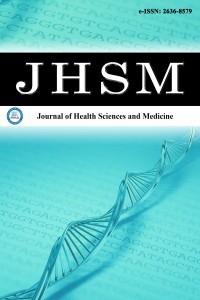
Journal of Health Sciences and Medicine
Yazarlar: ["Esra KEKİLLİ", "Yasemin GÜZLE ADAŞ"]
Konular:-
DOI:10.32322/jhsm.1118861
Anahtar Kelimeler:Prostate cancer,IMRT,High risk,Treatment
Özet: Aim: The aim of that study was to evaluate the treatment results of patients with high-risk prostate cancer who received image-guided intensity-modulated radiotherapy with curative intent. Material and Method: Patients who underwent curative radiotherapy (RT) for high-risk prostate cancer were evaluated retrospectively in our clinic from April 2010 to April 2021. Demographics, prostate specific antigen (PSA) levels, gleason score (GS), the TNM stage of the tumor, and the success of treatment and complications were noted. Results: Eighty-two patients were evaluated. The mean follow-up time was 39.1 months. The mean age was 71.2±6.2 (range 50-84 years) years. The mean PSA levels of the patients was 41.1±33.8, and the median was 27 ng/ml (range 8-129 ng/ml). The mean GS of the patients was 8.3±0.6, and the median was 8 (range 7-10). The mean overall survival (OS) rate was 75.6%; survival rates for 24 months and 36 months were 91.1% and 80.4% respectively. The progression-free survival (PFS) was found to be 62.8%. Moreover, the PFS time was found to be 66,6 months. Twenty-four months and 36 months PFS rates were 83.6% and 65.4%, respectively. Conclusion: Intensity-modulated radiotherapy (IMRT) combined with androgen deprivation therapy is a safe and effective treatment modality for elderly patients with high-risk prostate cancer.